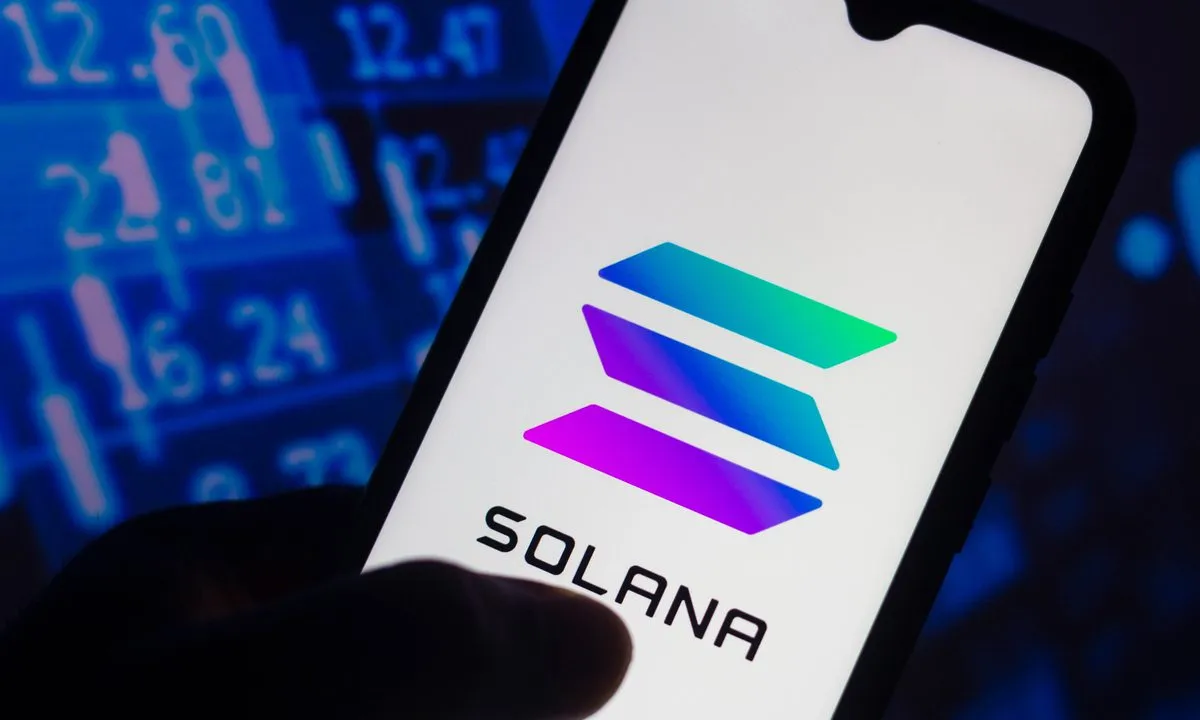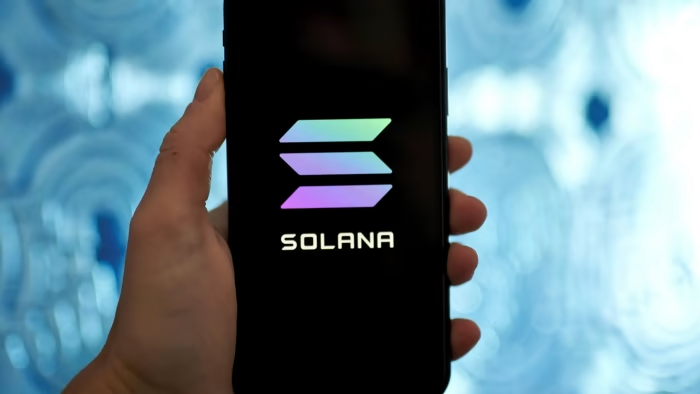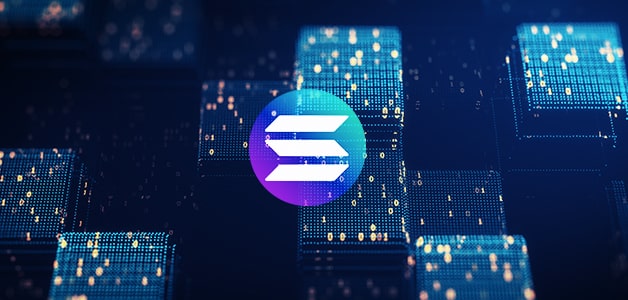Solana Blockchain: The High-Speed Future of Decentralized Finance
As blockchain technology continues to evolve, Solana has emerged as one of the most powerful and scalable platforms in the ecosystem. Known for its lightning-fast transactions, low fees, and developer-friendly architecture, the Solana blockchain is playing a major role in shaping the future of decentralized applications (dApps), NFTs, and DeFi (Decentralized Finance).
In this article, we’ll explore what makes Solana unique, how it works, and why it’s one of the most talked-about blockchain networks in the world.
What Is Solana?
Solana is a high-performance, open-source blockchain platform designed to support scalable, user-friendly applications. Launched in 2020 by Anatoly Yakovenko, Solana aims to solve the key limitations of traditional blockchains like Ethereum — namely, slow speeds and high gas fees.
Key Features:
-
Speed: Handles over 65,000 transactions per second (TPS).
-
Low Costs: Average transaction fee is less than $0.01.
-
Scalability: Can grow with global demand without sharding or Layer-2 solutions.
-
Decentralization: Powered by thousands of independent validators.
How Does Solana Work?
Solana combines several cutting-edge technologies to achieve unmatched speed and efficiency.
1. Proof of History (PoH)
Unlike traditional blockchains that rely solely on Proof of Work or Proof of Stake, Solana introduces Proof of History — a cryptographic clock that timestamps transactions before they’re processed. This drastically increases throughput and reduces confirmation times.
2. Tower BFT (Byzantine Fault Tolerance)
This consensus algorithm helps validate transactions securely and quickly while preventing forks or manipulation, even in the presence of faulty or malicious validators.
3. Turbine and Gulf Stream
These protocols optimize data propagation across the network, reducing latency and making it easier to scale as more validators join.
4. Sealevel Runtime
Solana can run thousands of smart contracts in parallel, a big improvement over Ethereum’s single-threaded approach.
Use Cases of Solana Blockchain
Solana isn’t just fast — it’s versatile. It powers a wide range of use cases across the crypto space.
| Use Case | Description |
|---|---|
| DeFi Platforms | Solana hosts decentralized exchanges (DEXs), lending platforms, and yield farms. |
| NFT Marketplaces | Fast, cheap NFT minting and trading (e.g., Magic Eden, Solanart). |
| Web3 Gaming | Supports blockchain-based games with real-time performance. |
| Payments | Enables instant, low-cost global payments and remittances. |
| Token Launches | Projects can build and launch SPL tokens, Solana’s version of ERC-20. |
Popular Projects Built on Solana
-
Serum: A decentralized exchange (DEX) with centralized speed.
-
Magic Eden: One of the largest NFT marketplaces on Solana.
-
Raydium: An AMM (automated market maker) and DeFi platform.
-
Phantom Wallet: A popular non-custodial wallet for Solana.
-
Helium: A decentralized wireless network migrating from its own chain to Solana.
Solana vs. Ethereum: A Quick Comparison
| Feature | Solana | Ethereum |
|---|---|---|
| TPS | 65,000+ | ~30 |
| Consensus | PoH + PoS | Proof of Stake |
| Fees | < $0.01 | Can exceed $10+ |
| Smart Contracts | Rust / C / C++ (Solana-native) | Solidity |
| DeFi/NFT Support | Yes | Yes |
While Ethereum leads in adoption and developer tools, Solana offers a compelling advantage in speed and cost, making it ideal for apps requiring real-time responsiveness.
Challenges and Criticism
While Solana’s performance is impressive, the network isn’t without issues:
-
Outages: Solana has experienced multiple outages due to network congestion or validator bugs.
-
Centralization Concerns: A large portion of initial token distribution and validators are in the hands of early investors or few node operators.
-
Learning Curve: Developers must adapt to Solana’s environment, which differs from Ethereum’s EVM-based ecosystem.
Still, the Solana team is actively addressing these concerns with upgrades, tooling improvements, and community governance efforts.
Conclusion: Is Solana the Future?
The Solana blockchain represents a bold step toward solving blockchain’s trilemma: speed, decentralization, and security. Its performance makes it one of the most viable platforms for DeFi, NFTs, and scalable dApps.
If Solana continues to improve its reliability and decentralization, it could very well become the backbone of the next generation of internet applications the true Web3.
Whether you’re a developer, investor, or enthusiast, Solana is a blockchain worth watching.

Solana Blockchain Wallet: A Guide to Storing and Securing Your SOL Assets
The Solana blockchain has rapidly grown into one of the leading platforms for fast, low-cost decentralized applications, DeFi, and NFTs. As more users adopt the network, choosing the right Solana wallet becomes crucial for safely storing, sending, and interacting with SOL and Solana-based tokens.
This article explains what a Solana blockchain wallet is, how it works, and what options are available for mobile, browser, desktop, and hardware storage.
What Is a Solana Wallet?
A Solana wallet is a software or hardware tool that allows you to manage digital assets built on the Solana blockchain. This includes:
-
SOL (Solana’s native cryptocurrency)
-
SPL tokens (Solana’s version of ERC-20 tokens)
-
NFTs hosted on the Solana network
Unlike custodial platforms (like exchanges), a Solana wallet gives you full control over your private keys, making you the true owner of your assets.
Types of Solana Blockchain Wallets
Solana wallets come in various formats to suit different user needs. Below is a breakdown of the most common types:
| Wallet Type | Description |
|---|---|
| Browser Extension | Easy access from web browsers; often used for DeFi and NFT transactions. |
| Mobile Wallet | Convenient for managing crypto on the go. |
| Desktop Wallet | Offers more control and features; suitable for active traders and developers. |
| Hardware Wallet | Most secure option for long-term storage; keeps keys offline. |
Top Solana Wallets in 2025
Here are some of the most popular and trusted wallets for interacting with the Solana blockchain:
1. Phantom Wallet
-
Browser extension and mobile app
-
User-friendly interface
-
Supports SOL, SPL tokens, and Solana NFTs
-
Built-in swap, staking, and dApp connection
2. Solflare Wallet
-
Available on browser, mobile, and desktop
-
Ledger hardware wallet support
-
Supports staking and NFTs
-
Designed specifically for the Solana ecosystem
3. Backpack Wallet
-
Supports Solana dApps and NFTs
-
Focus on Web3 identity and xNFTs
-
Built by the creators of Coral
4. Ledger Nano X / S Plus
-
Hardware wallet offering maximum security
-
Compatible with Solana via third-party apps (e.g., Solflare or Phantom)
-
Ideal for cold storage and long-term holding
Key Features to Look for in a Solana Wallet
When choosing a Solana wallet, consider the following features:
-
Security: Non-custodial wallets with encrypted key storage or hardware compatibility
-
Ease of Use: Intuitive UI for sending, receiving, and managing assets
-
NFT Support: Ability to view and manage Solana-based NFTs
-
Staking: Support for SOL staking to earn passive rewards
-
dApp Integration: One-click access to DeFi protocols and NFT marketplaces
How to Set Up a Solana Wallet (Example with Phantom)
-
Install the App or Extension
Go to the official Phantom website and install the browser extension or mobile app. -
Create a New Wallet
Follow the prompts to create a wallet. You’ll be given a 12-word recovery phrase — write it down and store it safely offline. -
Add SOL to Your Wallet
You can send SOL from an exchange or buy directly within the app. -
Connect to Solana dApps
Use your wallet to interact with platforms like Magic Eden (NFTs), Jupiter (swaps), or Marinade (staking).
Tips for Keeping Your Solana Wallet Safe
-
Never share your seed phrase or private key
-
Avoid downloading wallet apps from unofficial sources
-
Use hardware wallets for large amounts of SOL
-
Double-check wallet addresses before transactions
-
Keep backups of your recovery phrase in secure, offline locations
Final Thoughts
A Solana blockchain wallet is more than just a storage solution — it’s your gateway to the entire Solana ecosystem, including NFTs, staking, DeFi, and decentralized applications. Whether you’re a casual user or a power trader, there’s a wallet that fits your needs.
Choose one based on your security preferences, activity level, and device type, and always follow best practices to protect your assets.

Solana Blockchain and BIP39: How Mnemonics Work on Solana
The Solana blockchain is known for its speed, low fees, and growing ecosystem of decentralized apps (dApps), NFTs, and DeFi platforms. But behind every Solana wallet is a secure cryptographic foundation—often based on a standard known as BIP39.
In this article, we explore how Solana uses BIP39 for wallet generation, what it means for users managing private keys, and how BIP39-based mnemonic phrases help ensure secure wallet backup and recovery.
What Is BIP39?
BIP39 stands for Bitcoin Improvement Proposal 39. It defines how wallets generate and restore private keys from mnemonic phrases, typically 12 or 24 English words. These human-readable seed phrases allow users to back up their entire wallet securely.
The BIP39 standard is widely adopted by most blockchains, including:
-
Bitcoin
-
Ethereum
-
Solana
-
Polkadot
-
Binance Smart Chain
It enables cross-wallet compatibility, meaning you can restore your wallet on multiple platforms as long as they support the same derivation paths.
Does Solana Use BIP39?
Yes. The Solana blockchain supports BIP39 mnemonic phrases for generating wallet keys. When you create a wallet using tools like Sollet, Phantom, Solflare, or command-line utilities, you’re typically issued a 12- or 24-word recovery phrase.
This phrase can be used to:
-
Back up your wallet
-
Restore your wallet on another device or app
-
Access your SOL and SPL tokens
However, not all wallets use the same derivation path, which is crucial when restoring across different Solana-compatible wallets.
Solana BIP39 Derivation Path
A derivation path determines how a wallet generates private/public keys from a BIP39 seed. The most common derivation path for Solana wallets is:
Here’s what each part means:
-
44′: Refers to BIP44 multi-account hierarchy
-
501′: Coin type for Solana
-
0′: Account number
-
0′: Change (external/internal address)
This path ensures compatibility across most Solana wallets like Phantom, Solflare, and Sollet. If you use a wallet that defaults to a different path, you may not see your funds after importing a mnemonic, even though the seed is valid.
Tools That Support Solana BIP39 Mnemonics
Here are some tools and wallets that work with Solana BIP39 mnemonics:
| Tool/Wallet | Support for BIP39 | Custom Derivation Path |
|---|---|---|
| Phantom | Yes | No (fixed path) |
| Solflare | Yes | No (fixed path) |
| Sollet | Yes | Yes |
| Ledger Devices | Yes | Yes (via Solflare/Phantom) |
| Ian Coleman Tool | Yes (for testing only) | Yes |
If you’re using advanced tools or command-line interfaces like solana-keygen, you can specify custom derivation paths to match other wallets.
How to Generate a Solana BIP39 Wallet
You can generate a Solana-compatible BIP39 wallet using various methods:
1. Using Phantom or Solflare
-
Download the wallet extension or mobile app
-
Create a new wallet and write down the 12-word seed phrase
-
Store it securely (offline, never online or on cloud)
2. Using CLI
-
Paste your 12- or 24-word seed phrase
-
It will regenerate your wallet with the default Solana derivation path
3. Using Ian Coleman’s BIP39 Tool (Offline Only)
-
Visit https://iancoleman.io/bip39/ (recommended to use offline)
-
Select “Solana” as the coin
-
Enter or generate a mnemonic
-
Retrieve the public/private key and address
⚠️ Warning: Do not use online mnemonic tools for real wallets with funds. Only use for testing or education in a secure, offline environment.
How to Restore a Solana Wallet Using a BIP39 Phrase
To restore a Solana wallet:
-
Open your preferred wallet app (e.g., Phantom)
-
Click “Restore wallet” or “Import wallet”
-
Enter your 12- or 24-word recovery phrase
-
Make sure the wallet supports the same derivation path
If funds don’t appear, it’s likely due to derivation path mismatch, not a missing or wrong seed phrase.
Final Thoughts
The Solana blockchain’s support for BIP39 gives users secure and standardized access to their wallets through mnemonic phrases. Understanding how mnemonic generation and derivation paths work is key to managing your SOL and tokens securely—especially when switching between wallets.
Whether you’re a beginner or advanced user, always:
-
Keep your seed phrase offline and private
-
Choose wallets that support BIP39
-
Understand your wallet’s derivation path
-
Use hardware wallets for large balances

